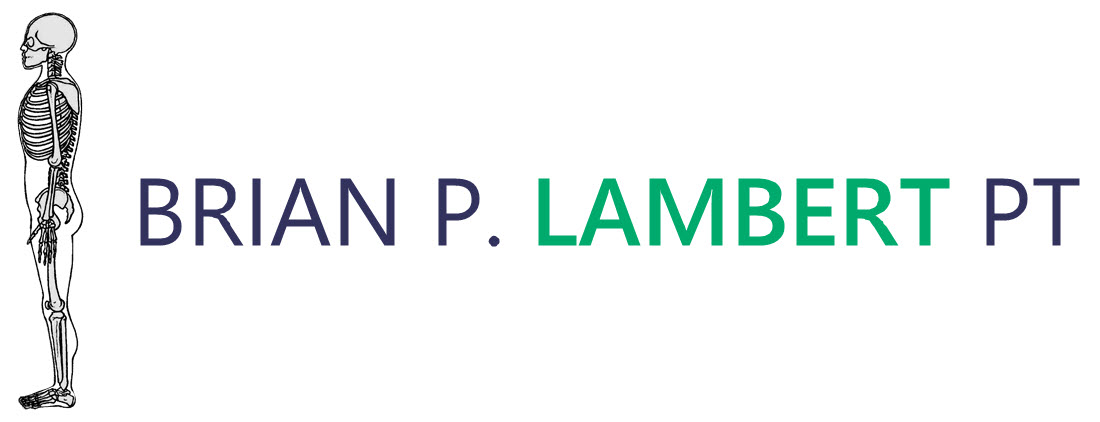
Frequently asked questions.
1. What conditions or problems are treated at your facility?
Pain brings most people to Brian P. Lambert PT physical therapy. Other reasons include restrictions in movement of muscles or joints, poor posture, poor single leg balance, muscle weakness, or need for rehabilitation following an accident or orthopedic surgery.
2. What is the difference between a physical therapist and a chiropractor?
Our understanding is that chiropractors use manipulation of the spine to alleviate pain that is either near the spine or referred into the extremities. Our physical therapists use manual therapy and exercise to treat dysfunctional areas of the body to relieve pain and restore strength and flexibility. Physical Therapists at Brian P. Lambert, PT, teach their patients our own special combination of exercises to achieve these goals. These exercises can easily be done at home or in a health club setting. We use manual therapy techniques derived from osteopathic teachings.
3. What differentiates the practice of Brian P. Lambert, PT, from other physical therapy practices?
The therapists at Brian P. Lambert, PT, systematically evaluate patients for biomechanical and/or functional faults . We assess how a person uses his or her body during daily activities. The therapists use manual techniques in conjunction with an independent exercise program. We work towards improving flexibility, posture, and strength and recruitment of appropriate muscles. We correct faulty movement patterns which tend to perpetuate pain and lead to excessive wear and tear of the joints. Treatment sessions are one-on-one: we treat patients one at a time.
4. How many visits will be required?
Most patients are seen for five or six visits. Some problems will require a more extensive rehabilitation program. We have a well equipped fitness area to supplement our physical therapy sessions.
5. Will I experience immediate improvement?
We expect to see some improvement with each treatment session. We reassess your condition at each visit to appropriately modify your treatment program as needed.
6. How do I know when to apply heat and when to apply cold for pain relief?
Generally apply ice within the first 72 hours following a sprain or strain. This will help control pain and inflammation. After 72 hours use heat or ice, depending on which provides the most pain relief.
7. What is manual therapy?
Manual therapy refers to techniques that are applied to the body to restore mobility in the restricted areas of the musculoskeletal system. Massage is a form of manual therapy used to address soft tissue including muscles or their tendonous attachments to bone. Osteopathic techniques are a form of manual therapy applied to correct mechanical dysfunctions in the musculoskeletal system.
8. What is a modality?
A modality is a therapeutic procedure used to control pain and/or reduce inflammation. Modalities we use include hot and cold packs, ultrasound, and electrical stimulation. Exercise and manual therapy are also considered "modalities."
9. What does ultrasound do?
Ultrasound is high frequency sound waves that produce mechanical and thermal effects in soft tissue. The frequency of the sound waves is different from that of diagnostic ultrasound, and therapeutic ultrasound does not generate a picture. We use ultrasound to gently warm deep soft tissue. The temperature increase within soft tissue is generally one to two degrees. This increases circulation and makes the tissue more pliable.
10. If I have not had time to do my exercises, should I cancel my appointment?
You should not cancel your appointment if you have not followed through with your exercises. The exercises are very important and are integral to your recovery. Keep your appointment. We reassess the need for further manual therapy and review and reinforce the home exercises.
11. How do I know if I am doing my exercises correctly?
During your initial session you will be instructed in each exercise that you need. We will explain the necessity of the exercise and the specific details of executing the exercise. You will receive an exercise sheet, with notations, specific to your needs. We will review your home exercises at each visit. Between sessions we can schedule brief appointments for reviews if needed.
Visit our YouTube channel to watch our exercise videos.
